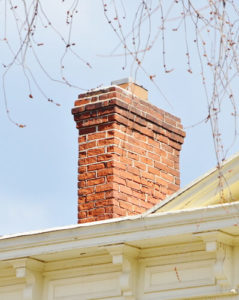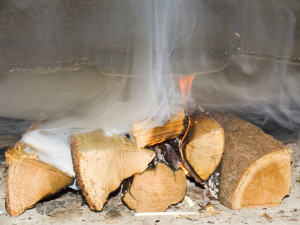Chimney Damper Installation
Your chimney is made up of many parts. These parts need to function properly in order for the chimney to do its job correctly. What happens when the chimney doesn’t work properly? The efficiency drops, fuel and energy go to waste, and fire risk goes up. In addition, it will also require more maintenance than usual. One of these indispensable parts is the damper.
The Chimney Damper
During the cold months when a fire is burning in your fireplace, stove, or insert – the damper is very important! With it you can control the intensity of the flame and prevent smoke from filling your home. You should never close your damper completely when a fire is burning. This is because it closes the vent, letting hazardous gases into your home. It is also helpful during the off-season, keeping hot air from falling from the chimney into the house, or letting conditioned air leave through the chimney. A damper closed securely can save you in energy costs.
Common Damper Problems
Like every part of the chimney, even a good damper can go bad over time. There are many factors that can affect the damper. These include water leaks, soot, and creosote buildup. Also, natural occurrences like tornadoes, earthquakes, and fires can affect it too. Some older homes may have an outdated damper that is less efficient or worn out. Maybe your damper isn’t worn out, but it doesn’t fit securely enough to prevent a draft. What’s the only thing worse than burning too much electricity running an air conditioner? Running an air conditioner and still feeling a warm draft! You can prevent this occurrence by having a new damper installed.
Top-Sealing Dampers
Energy-top, or top-sealing dampers, take all of the benefits of a traditional damper, and improves upon them. This damper is installed at the top of the chimney, instead of the interior throat of the chimney, and functions as a cap as well as a damper. When the fire is burning, the damper stays open to vent the fire properly. The damper also keeps animals, debris, and weather out year-round. This is just like a cap, except the tight seal closes it completely when the fire is out. That means that you save on heating/cooling costs when your fireplace isn’t in use. You don’t have to buy a complicated chimney sealing kit or climb on the roof with a tarp. You simply pull the chain located next to your fireplace, and it closes securely.
What better way to protect your chimney than from the top down? With the energy-top dampers, you don’t have to worry about critters crawling into your flue. It also prevents humidity mingling with your chimney soot that can make it stink!
Homeowners love the benefits and the savings so much, that more and more are having their throat dampers replaced with these energy-top dampers. If you’re interested in one, now is the time to make the change. You can still save on energy this summer if you schedule your appointment now. Contact Chief Chimney Services and let’s talk chimney dampers. Call 631-863-2460 or make an appointment online!


